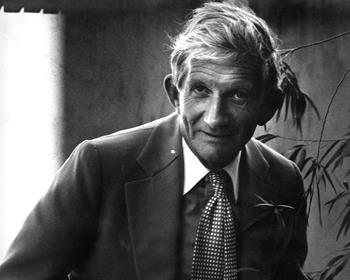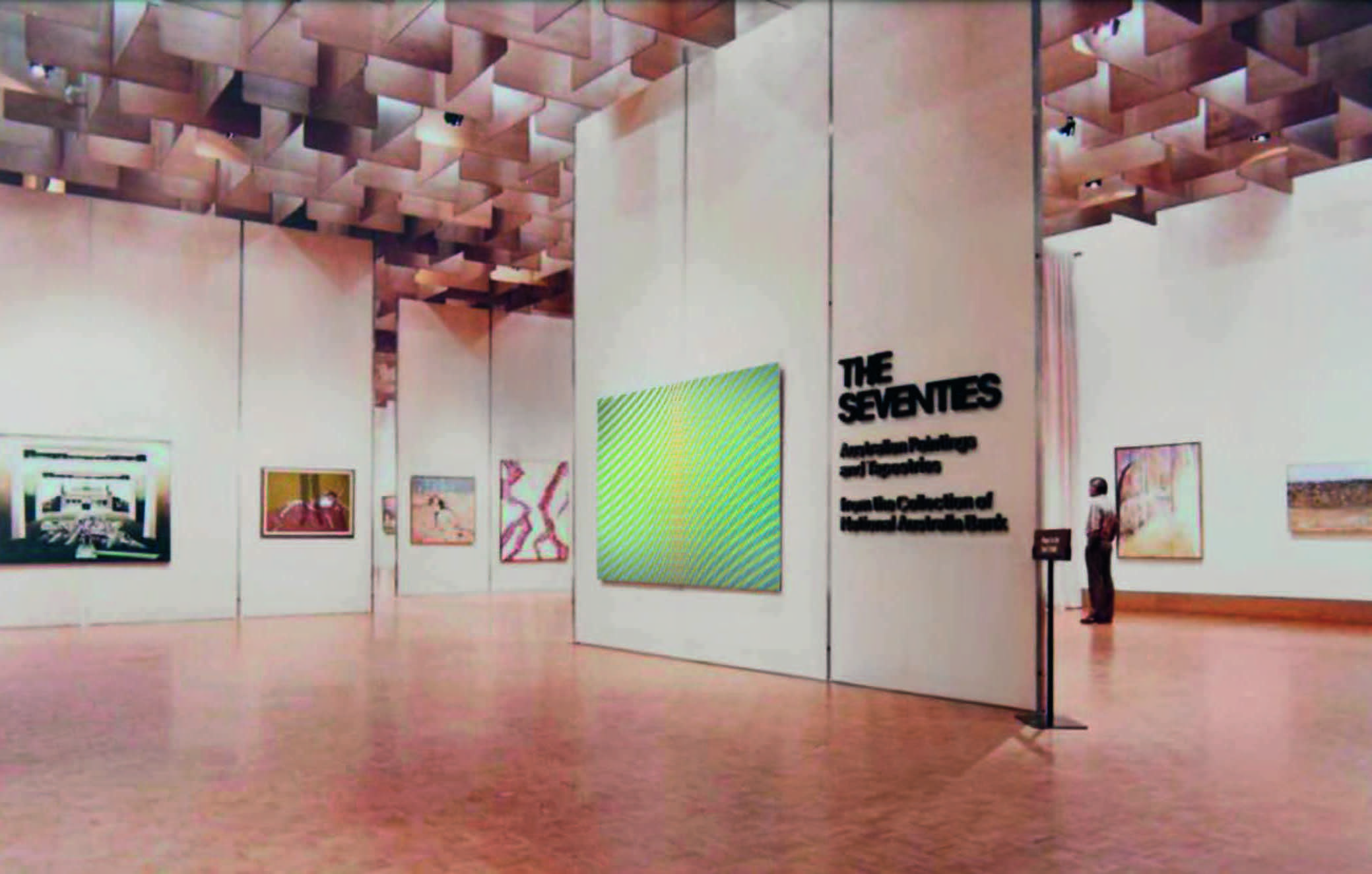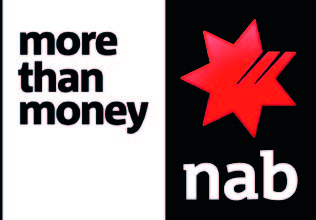NATIONAL AUSTRALIA BANK COLLECTION
PREFACE
In the early 1970s, NAB began to acquire Australian artworks that celebrated the diversity and depth of modern Australian artistic vision. Over the subsequent decades, NAB’s collection has given art appreciators a unique glimpse into some of the very best examples of our country’s contemporary art. Featuring more than 2,000 works, the collection includes examples from some the country’s most recognised artists including Frederick McCubbin, Sidney Nolan, Arthur Streeton, John Brack, Jeffrey Smart and John Olsen.
However, while many of these artworks are quite historically important, they are not significant to NAB’s history. Although the art is appreciated, it is clearly not core to NAB’s role as a bank supporting customers, and accordingly, in early 2021 NAB made the decision to sell the vast majority of the Australian art collection and reinvest funds back into the community via the NAB Foundation.
This builds on the NAB Ready Together program to support Australians before, during and after natural disasters. All proceeds of the sale will be donated to the NAB Foundation supporting community grants that help prepare people, communities and our environment for natural disasters, and support long-term recovery and resilience work. As NAB Group Chief Operating Officer, Les Matheson, notes
‘We’re constantly driven to find new ways to help our customers and communities prosper. Proceeds from this sale will go back into the community, helping the NAB Foundation provide grants over coming years. At a time when Australia’s climate is changing, communities and the environment face increased risk from natural disasters, these funds will allow us to do even more to help.
By redirecting these profits into the NAB Foundation, the funds will contribute to the Foundation’s grant programs to further safeguard local and regional communities and fund projects that will support our economic recovery and ensure Australia is more prepared for natural disasters and climate change. We hope this work will help the communities and customers we serve and make a real difference at a critical time for the nation’s economic recovery from COVID-19 and the extreme bushfire and weather events of 2020.’
The National Australia Bank Seventies Collection
Artistically the decade of the 1970s was a period of excitement and confidence with a cultural buoyancy underpinned by a period of strong economic prosperity. In Melbourne, the new building for the National Gallery of Victoria had recently opened (August 1968) with The Field exhibition presenting, with great conviction, a new contemporary international style within the context of the post-war generation of artists coming into their artistic maturity. Above all, as the seventies unfolded, there was a celebration of stylistic plurality in contemporary Australian art.
This plurality was in part energized, monetarised, and sustained by the excitement of an immersion in contemporary art. During the 1960s, one of the significant forms of patronage had been through art prizes, including major national prizes such as the Archibald Prize at the Art Gallery of New South Wales, and a plethora of smaller regional art prizes hosted by municipal councils and societies. Private patronage for contemporary art was highlighted when the newly formed magazine Art and Australia (May 1963), in its initial editions ran a series of articles highlighting private collections in Australia, including those of James Fairfax, Aubrey Gibson, and Margaret Carnegie, which ranged across the history of Australian art, but also emphasised the vitality of contemporary art.
INTRODUCTION IMAGE Georges Mora.jpg

Georges Mora
The emphasis and promotion of private and corporate collections during the seventies saw the rise of a new group – including the Besen and the JGL collections among others – that had a significant focus on contemporary art. As well, many corporate collections such as the ANZ, Elders IXL, and Westfarmers, with a strong emphasis on historical art began to move towards a representation of contemporary art.
The establishment of the Australia Council in 1973, and as a statutory body in 1975, introduced support for artists through grants, access to overseas studios, and support for exhibitions. The federal and state governments also increased support for public galleries, and helped develop a regional gallery network focused on contemporary art acquisitions, exhibitions, and the development of art schools. Art acquisitions and lectureships also provided artists with financial confidence and career professionalism that engendered the ambition to achieve. The commercial gallery dealer networks also began to evolve with a program of regular artist solo exhibitions that helped establish career credibility and continuity. Combined with the imprimatur of art museum acquisitions, the seventies cemented a sense of confidence in contemporary Australian art that was consolidated by the auction houses creating a secondary market for contemporary art.
Within this context, the entity that would emerge as the National Australia Bank began its collection of the art of the seventies. Little over a decade later, there was an exuberant celebration at the opening of the exhibition at the National Gallery of Victoria of The Seventies: Australian Paintings and Tapestries- from the collection of the National Australia Bank in 1982. It was also the first time the public would formally learn the new name and seven-pointed star logo of Australia’s newest bank – the National Australia Bank, which had come into existence in 1982 with the merger of the National Commercial Bank of Melbourne and the Commercial Banking Company of Sydney, an entity which was rebadged during 1983.
The Seventies: Australian Paintings and Tapestries exhibition, held at the NGV from 15 October to 28 November 1982, consisted of 102 paintings displayed in the Temporary Exhibitions Gallery and six tapestries woven by the Victorian Tapestry Workshop displayed in the Great Hall. The National Australia Bank Art Committee for the collection had been established in 1975; its formation being indicative of the bank's increased support of the arts, and in particular of visual art. It echoed the visionary engagement of the Art Committee's chair, Sir Andrew Grimwade, then a Director of the NAB, who in 1976, also accepted the role of President of the NGV Council of Trustees.
The Art Committee appointed the eminent art dealer, Georges Mora as its art consultant. Although during the seventies art included a complex field of activities encompassing a wide range of genres such as Conceptual and Process Art, Performance Art, Environmental and Land Art, Video and Film Art, Art Language and Community Art, it was decided that the focus for the NAB collection would concentrate on paintings exclusively from the 1970s decade. It aimed to select across painting styles, both abstract and figurative, the most outstanding examples by well-established, mid-career, and young emerging painters, and as such would represent a microcosm of the best paintings of the decade.
Georges Mora was a very appropriate choice as a consultant; he had arrived in Melbourne in 1951 with his artist wife Mirka, from Paris, via New York. As a glamorous couple, they soon established a Parisian-style coffee lounge that morphed into the Mirka Café, which became a centre for the Melbourne avant-garde. Later their Café Balzac in East Melbourne also became the gathering place for many of Australia's most significant contemporary artists. In 1956 Georges was elected President of the Contemporary Art Society and two years later together with John and Sunday Reed, he transformed the CAS Gallery into the fledgling Museum of Modern Art (and Design) of Australia, which in 1981 was established at the Reed’s Heidelberg rural property as the Museum of Modern Art at Heide. The Reeds were a formative influence on Australian art from the 1930s onwards, closely associated with Sidney Nolan, Albert Tucker, Joy Hester, John Perceval, and the Angry Penguins group.
In 1965 Georges had established the Tolarno Restaurant and Gallery in St Kilda, which became a pre-eminent centre for contemporary art, showing many of the new generation of abstract artists who featured in the inaugural 1968 NGV exhibition The Field. The Moras’ modernist house in Aspendale, which shared a common courtyard with the Reeds’ beach house, regularly hosted luncheons featuring artists from the Heide group, as well as a wide variety of contemporary figures including Charles Blackman, John Olsen, Asher Bilu, Martin Sharp and Ivan Durrant. It was with this background, and his commitment to contemporary art and acknowledged expertise, that Georges Mora assembled the National Australia Bank Seventies Collection.
Australian art during the 1970s has often been characterised by the activities that happened in Sydney and Melbourne, which can be encapsulated in the two pre-eminent artists of the period – Brett Whiteley and Fred Williams. In Sydney, Whiteley epitomised the flamboyant bohemian artist whose fluid calligraphic style aimed at capturing the hedonism of contemporary pop culture; while in Melbourne, Fred Williams' disciplined and methodical approach produced abstracted, encoded landscapes that reveal a figurative authority in his use of line, placement, and gesture with a visual schema that has influenced the way we now view the Australian landscape.
History is a convenient set of generalisations, simplified to give an easy overview. A continuous subtext within the history of art is the challenge of the old by the new. During the twentieth century, it was the pastorale that gave way to the urban, and figuration was challenged by abstraction. Although the seventies has been characterised as a period of plurality, the ongoing subtext was regional Australian imagery, versus the new international abstract.
Although the Sydney/Melbourne dialogue dominates in the National Australia Bank Seventies Collection, other centres have contributed significant works to the collection. For example, Western Australia is represented by the landscapes of Robert Juniper, Guy Grey-Smith, and George Haynes, and a painting based on a grid/system/repetition compositional schema by Miriam Stannage; Queensland is represented by landscape painters Lawrence Daws and Ray Crooke; while South Australia is represented by its then expatriate painters Sydney Ball and Alun Leach-Jones, both representing the new abstraction that emerged from New York in the 1960s. Ball's lyrical abstraction is concerned with thick washes and stains of pure colour, while Leach-Jones with a Colorfield heritage of crafted, crisp hard edges of pure colour, plays with trompe I’oeil patterns.
One of the most important contemporary South Australian artists, who settled permanently in Italy in 1965, was Jeffrey Smart. As an urban realist painter, with echoes of Orwellian dystopia, he captured the feeling of the cool ethos of a modern metropolis. His use of intense colours and precise repeating geometry, stylised from realist patterns of often deserted cityscapes, adds a surreal quality and tension to his work. In Melbourne his counterpart is Rick Amor who brings a Melbournian ethereal, tonal quality to his paintings, often with silent figures watching from deep shadows and darkened windows.
11115.jpg

The wide variety of styles within the various genres in the NAB Seventies Collection are well illustrated by the various depictions of Sydney Harbour. These include the more traditional, yet expressive approach of Lloyd Rees, and the painterly, evocative, and semi-abstracted seascapes by John Firth-Smith, that merges watery effects with the schema of the hull and waterline of ocean tankers. Another Sydney artist who is also a master of the painterly line telling a story, is John Olsen. His line tracks across the landscape, journeying past painterly emblems and calligraphic symbols, like a diarist recording elements of the ‘you beaut country’.
The theme of the city is well represented in the NAB Seventies Collection, including Michael Shannon’s wintery architectural skyline of Melbourne, and the more intimate shopfront still-life painting of John Brack. Interested in the potential of disquiet and the anomaly of the elaborate window display of reflective stainless-steel cooking utensils, Brack animates this scene with multiple self-portraits on the utensils’ reflective surfaces. Brack sought to imbue his work, about daily rituals and urban activities, with a stylised formal geometry, a timeless classicism, against the gestural emotional romanticism of the moment. Common objects thus served as analogies for complex intellectual and philosophical statements.
In his youth John Brack had shared a studio with Fred Williams, and they remained friends throughout their life. Williams, like Brack, was conscious of the cultural heritage of their past, but he took on the challenge and the tradition of landscape, a genre that had dominated the history of Australian art. Williams observed that unlike European landscapes which seem to naturally compose themselves into picturesque scenes, in Australia 'you have to invent your focal points’. He used lines, both actual and implied, to structure his landscapes. This he did especially with water – riverbanks, shorelines, forest ponds, swamps, waterfalls, eroded creek beds, and river gorges; in short, his lines and abstract patterns follow the patterns of water distribution. The abstract expressionist calligraphy representing trees in his famous You Yang series corresponds to the water distribution in valleys in the semi-arid scrubland around outer Melbourne.
Many artists represented in the NAB Seventies Collection were mid-career artists. Georges Mora’s familiarity with the Heide circle and its journal Angry Penguins that influenced many Melbourne artists in the 1940s, gave him access to many well-established, mid-career painters of the time. They include Sidney Nolan, who had painted the 'Ned Kelly series' in the mid-1940s, and to international acclaim, continued to look towards history and myth to illustrate his profound experiences of the Australian outback. Arthur Boyd too, after a series of expressive painterly images of war-afflicted cripples in suburban Melbourne, turned to biblical themes, using old master techniques, to imbue his paintings with a strong spiritual ethos. By the 1970s his focus turned back towards the Australian bush, depicting sapling landscapes of blue and gold, best characterized by his images of the bush around the Shoalhaven River.
Albert Tucker, like Nolan and Boyd, was part of the Reed circle at Heide. In the 1940s he painted a series of 'Images of Modern Evil' which avoided literary myths in preference for aggressive, socially expressionist images of war-time society, before he left Melbourne for a decade overseas. While in Italy he developed the 'Antipodean Head' series of paintings which featured a rugged, highly-textured, earth-coloured head in profile. Symbolically these heads represent the harshness of the Australian climate and its effects on its inhabitants. Also associated with the group was John Perceval who, likewise, had a spontaneous painterly technique which in later landscape works also incorporated thick impasto surface textures echoing his early admiration for the work of Vincent Van Gogh.
A generation later Sydney artist, Martin Sharp also looked to Van Gogh as a source of artistic inspiration. Sharp who was highly influential in the formation of Sydney Pop Art, was co-founder of OZ magazine to which he contributed numerous cartoons and illustrations, designed to transcend the barrier between fine art and popular culture. By the seventies, his focus was 'looking after', revitalizing and reinterpreting, a number of popular culture icons, ranging from Tiny Tim to Vincent Van Gogh.
In Melbourne, Ivan Durrant had a similar interest in popular culture. He employed and emulated photography in his paintings, as well as spectacularly manipulating contemporary media to publicise his art statements. Photography as a device was also used by other artists such as Jan Senbergs who incorporated photo-stencil silkscreen printing onto his canvas to give texture and detail to his painted images and further enhance the surreal, industrial feel of his landscapes.
Fellow Melbournian Leonard French used a semi-figurative geometry, based on Christian-Byzantine symbolism of the cross and fire, to evoke a spiritual force of war and social revolution; while Roger Kemp evolved an elaborate personal iconography of circles and crosses to represent his metaphysical view of the world.
The NAB Seventies Collection also represents the art of the cool – abstracts with crisp hard edges and flat areas of colour, as in the works by Michael Johnson and Lesley Dumbrell. Johnson said of his work, ‘the edge is where the colour meets, not where the shapes change … the shape is the container of colour’; for him it was all about colour relationships. For Dumbrell the heritage of the intricate patterning and carefully calibrated colour, as seen in her work Chinook 1975, which was reproduced on the cover of The Seventies catalogue, lies in Op Art. The title Chinook, named after a North American wind, references the optical vibrations across the surface of the canvas.
The interest generated by the National Australia Bank: The Seventies Collection through its distribution throughout the bank head office and display in its various bank branches – and culminating in the exhibition at the National Gallery of Victoria – led to the NAB extending its support for contemporary art. In the words of NAB Chairman Sir Rupert Clarke, the bank 'was predisposed to support contemporary Australian Art', and again, Georges Mora was commissioned to commence acquisitions for a new collection titled Rivers in Australian Art.
Opening at the Museum of Modern Art at Heide in October 1991, the Rivers in Australian Art collection consisted of 30 works, and as the title implies, selected around the theme of rivers. A number of artists are represented in both National Australia Bank collections, such as Rick Amor, Howard Arkley, Peter Booth, Arthur Boyd, William Delafield Cook, John Olsen, and Richard Larter. Many of these artists in the ‘Rivers collection’ had further refined their early style, such as Delafield Cook who had moved from Photorealist work inspired by the pioneering photographer Henry Fox Talbot to a highly detailed Romantic realism; while others such as Howard Arkley had moved from his early Minimalist abstracts to a colourful figurative style which demonstrated his mastery of the airbrush technique. Peter Booth represented in The Seventies collection by an expressionistic impasto abstract of 1975, produced for the ‘Rivers collection’ an image of a river where its painterly flow is enhanced by his dynamic brushwork and fluid surface texture.
Through its patronage, the National Australia Bank has supported, significantly encouraged, and promoted contemporary Australian art, and indeed, The Seventies Collection is a treasure-trove containing all the major painters of the period. In these changing times, the cultural role of the bank has been redefined, paralleling a similar shift in contemporary art towards a wider community involvement and support.
ROBERT LINDSAY
